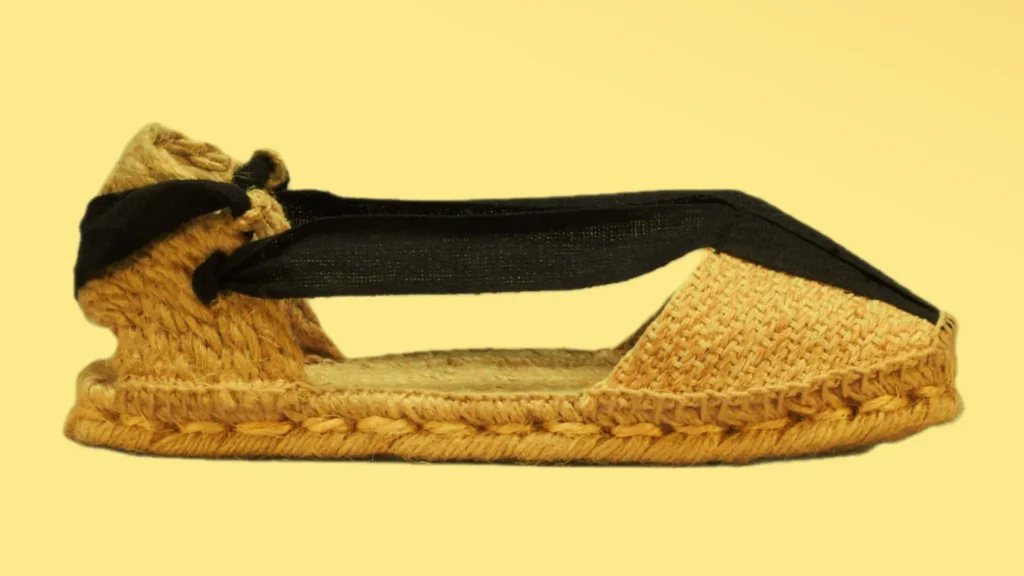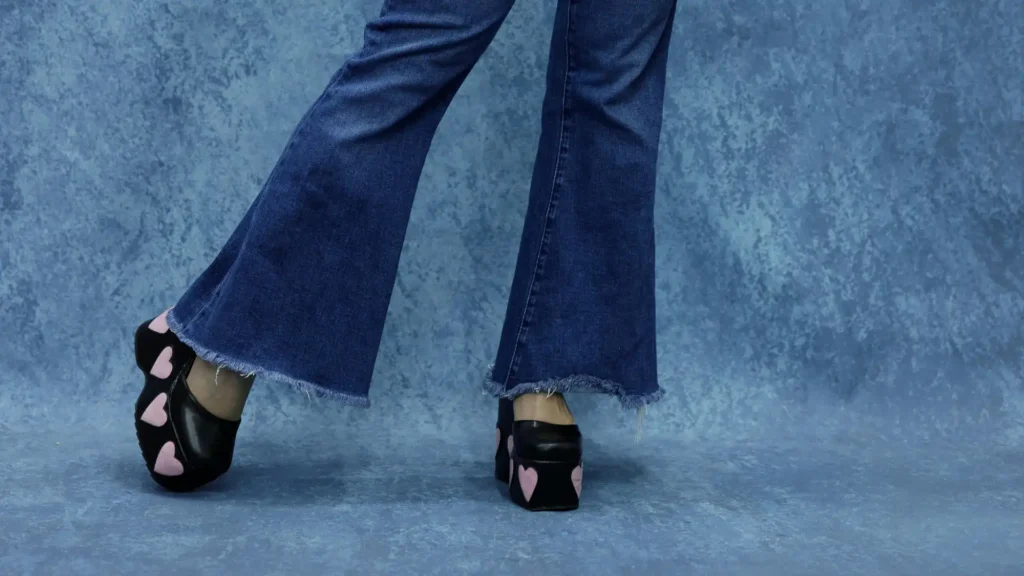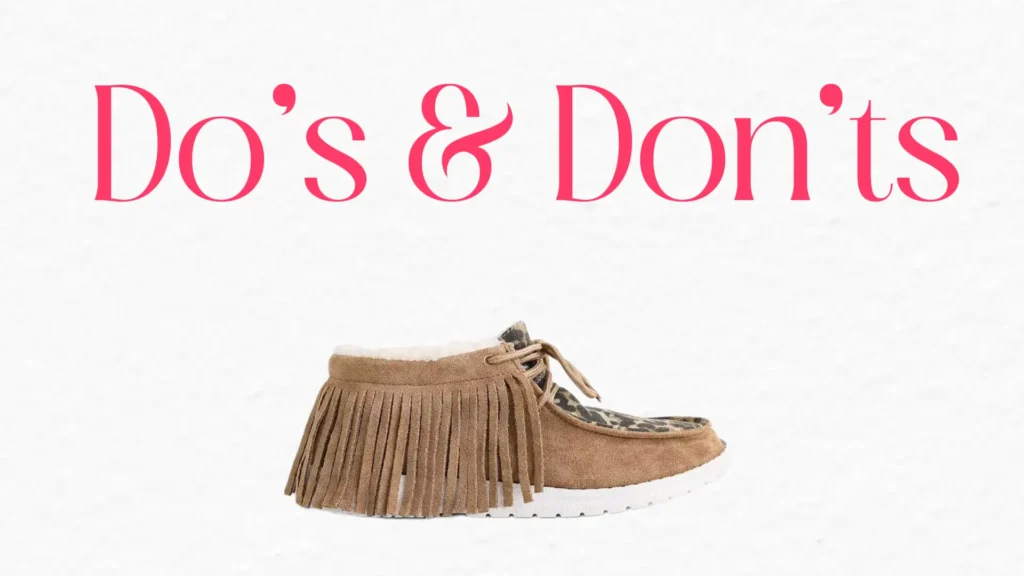Statistics reveal espadrilles have graced Spanish feet for over 4,000 years. This humble footwear, born from necessity, carries a legacy of resilience and style. You’ll dive into their rich journey through Spain’s past and present in this expanded history.
What Is the Origin of Espadrilles in Spain?
Archaeological digs trace espadrilles to Spain around 2000 BCE. In the Pyrenees, early settlers faced rugged terrain and needed sturdy shoes. They turned to local plants and fabrics to craft solutions.
The word “espadrille” derives from “esparto,” a tough grass plentiful in Spain. Ancient people dried it and wove it into ropes for soles. These held up against rocky paths and harsh conditions.
By the 13th century, Catalonia’s records noted “espardenyes.” These featured canvas uppers and woven grass bases. Their design fit the needs of rural workers.
Excavations in caves uncovered early fragments. Simple and cheap, they spread across villages. You’d see their mark in Spain’s northern regions.
Trade carried the concept to southern areas. Farmers and laborers adopted them for daily tasks. Their practicality fueled a growing tradition.
Spain’s landscape shaped this footwear. The Pyrenees demanded durable, light shoes. Espadrilles began as a clever fix, rooted in history.
How Did Espadrilles Become Part of Spanish Culture?
Espadrilles took root in Spain through sheer necessity. Rural folks needed affordable shoes for fields and hills. They crafted espadrilles from materials at hand.
Families turned making them into a tradition. Parents taught children to weave soles and sew uppers. This skill bonded communities across generations.
By the 18th century, espadrilles were widespread. You’d spot them in markets, farms, and villages. Their presence showed in art and tales.
The warm climate suited their design. Breathable canvas and sturdy soles kept feet comfortable. Spaniards relied on them year-round.
Festivals brought espadrilles to celebrations. Dancers and workers wore them for ease. They became a staple of daily life.
Over centuries, they symbolized resourcefulness. Spaniards valued their simplicity and strength. You can see why espadrilles endure in culture.
Their role grew beyond function. They reflected a way of life in Spain. Espadrilles became a true cultural emblem.
Who Wore Espadrilles in Ancient Spain?
In ancient Spain, espadrilles served the working class. Farmers trudged through fields in them, needing tough soles. Shepherds and laborers trusted them for long days.
Women and children wore them too. Families made pairs at home, fitting everyone. This kept all feet protected.
The wealthy and nobles passed on espadrilles. They opted for leather shoes or boots. Espadrilles stayed with those tied to the land.
Caves and ruins reveal their use. In the Pyrenees, they matched the rough ground. You’d find them across rural Spain.
Fishermen and craftsmen chose them as well. Their light weight aided hard work. Records show their role in daily tasks.
They marked no status, just utility. Common people leaned on them for survival. Espadrilles defined ancient Spain’s workers.
No one else claimed them. Their design suited toil, not luxury. You can picture them on ancient feet.
What Materials Were Traditionally Used to Make Espadrilles in Spain?
Esparto grass anchored traditional espadrilles. This strong plant grew wild in Spain’s dry zones. Artisans wove it into thick, lasting soles.
Canvas or cotton cloth covered the top. Spaniards stitched it to the base by hand. This kept feet cool in summer heat.
Hemp and jute stepped in at times. These fibers, tough and local, worked well too. You’d see them in different areas.
Cotton or linen thread tied it together. Simple tools helped artisans join the parts. This made espadrilles easy to produce.
Plant dyes brought color to some. Natural tones, beige or brown, were standard. Materials came straight from nature.
Families gathered grass and cut cloth. They dried and prepared everything themselves. You’d admire the effort in each pair.
All parts were basic and abundant. This kept costs low for villagers. Espadrilles sprang from Spain’s resources.
How Did Espadrilles Evolve from Peasant Footwear to a Fashion Staple in Spain?
Espadrilles started as peasant shoes, built for work. Farmers and laborers prized their durability and cost. They fit the needs of rural Spain.
In the early 20th century, eyes turned to them. Artists saw charm in their simple look. Painters and writers wore them, stirring interest.
By the 1940s, designers joined in. They added bright colors and thicker soles. This shifted espadrilles toward style.
The 1950s brought them to cities. Coastal towns saw them in summer outfits. You’d notice them on beaches and streets.
Fashion houses tweaked them further. Heels and laces made them versatile. They worked for casual and finer looks.
In the 1960s, celebrities wore them. Photos of stars boosted their fame. You’d find espadrilles in shops everywhere.
They left fields for fashion’s stage. Spaniards embraced their new appeal. Espadrilles became a style must-have.
What Role Did Espadrilles Play in the Spanish Civil War?
During the Spanish Civil War (1936–1939), espadrilles proved vital. Leather ran short, so troops turned to them. Republicans, in particular, used them widely.
Soldiers marched over rough ground in them. Woven soles gripped well, despite wear. They stood up to mud and dust.
Civilians pitched in, making pairs fast. Women and children wove and stitched them. This kept fighters shod in chaos.
Photos capture troops in espadrilles. Their quick production met urgent needs. You’d see their value in war.
They stood for grit and survival. Both sides leaned on their simplicity. Espadrilles carried soldiers through battle.
Camps and fronts relied on them. Volunteers churned out batches for armies. They played a quiet, key role.
Their legacy from the war endures. Spaniards recall their strength in crisis. You can feel their impact still.
How Are Espadrilles Connected to Catalan and Basque Culture?
In Catalonia, espadrilles, or “espardenyes,” fit daily life. Fishermen wore them for grip on boats. Farmers used them in muddy fields.
They shone in Catalan folk dances. Dancers needed light, flexible shoes. You’d see espadrilles at festivals.
Catalan artisans honed the craft. They wove soles and stitched with care. This skill lives on today.
Basque lands welcomed espadrilles too. Workers in rugged hills needed strength. They matched the steep, tough terrain.
Markets in the Basque region sold them. People chose them for ease and use. You’d spot them in busy towns.
Both areas hold them dear. They reflect history and hard work. Espadrilles tie Catalonia and Basque lands to Spain.
Craftsmanship keeps them alive. Artisans honor old ways in both regions. You can sense their cultural weight.
When Did Espadrilles Gain Popularity in Spanish Fashion?
The 20th century sparked espadrilles’ fashion rise. In the 1940s, designers saw their potential. They traded plain cloth for vivid patterns.
By the 1950s, coastal Spain took notice. Summer crowds wore them by the sea. Their light feel fit warm days.
The 1960s brought a celebrity boost. Stars in espadrilles filled photos and news. You’d see them in stores nationwide.
In the 1970s, trends grew stronger. Brands added flair with new designs. Espadrilles suited all kinds of outfits.
The 1980s locked in their place. High-end makers crafted sleek versions. Runways and streets showed them off.
Spain’s climate helped their climb. People loved their style and comfort. You can trace their rise through time.
They moved beyond rural roots. Fashion embraced their unique look. Espadrilles became a Spanish staple.
What Is the Significance of Esparto Grass in the History of Espadrilles?
Esparto grass powered espadrilles from the start. This tough plant thrived in Spain’s dry soil. It formed the core of early soles.
Workers cut and dried it by hand. They twisted it into ropes for strength. This made durable bases for shoes.
Its sturdiness let pairs last longer. Rural folks needed it for tough tasks. You’d find esparto in most espadrilles.
Harvesting it built local livelihoods. Families earned income from the grass. It shaped rural Spain’s economy.
The grass bent well for crafting. Artisans shaped it into thick soles. Esparto drove espadrilles’ early success.
Its role ties to Spain’s past. Some makers still use it today. You can feel its mark on history.
Without esparto, espadrilles might not exist. It gave them life and purpose. Spain’s story owes much to this plant.
How Are Traditional Espadrilles Still Crafted in Spain Today?
Artisans in Spain craft espadrilles by hand. They weave esparto or jute into soles. This echoes methods from long ago.
Cotton or canvas forms the top piece. Workers cut and stitch it carefully. You’d see the skill in each step.
Small shops, many in Catalonia, thrive. Families pass down weaving and sewing. This keeps tradition strong and alive.
Some use tools for faster work. Most still weave and stitch manually. Quality stays high this way.
Colors and laces add fresh style. Artisans mix old craft with new ideas. You can buy these in markets.
Rural Spain hosts these makers. They work in small runs, with focus. Espadrilles link you to the past.
Batches go to shops and fairs. Each pair carries history and care. You’d value their handmade charm.
Espadrilles span 4,000 years in Spain. From peasant needs to fashion fame, they endure. You’ll find them in stores and streets.
They mirror Spain’s grit and creativity. Workers, fighters, and designers shaped them. Each pair holds a slice of time.
Slip on espadrilles and touch history. They blend old roots with new style. Spain’s legacy walks on in them.




